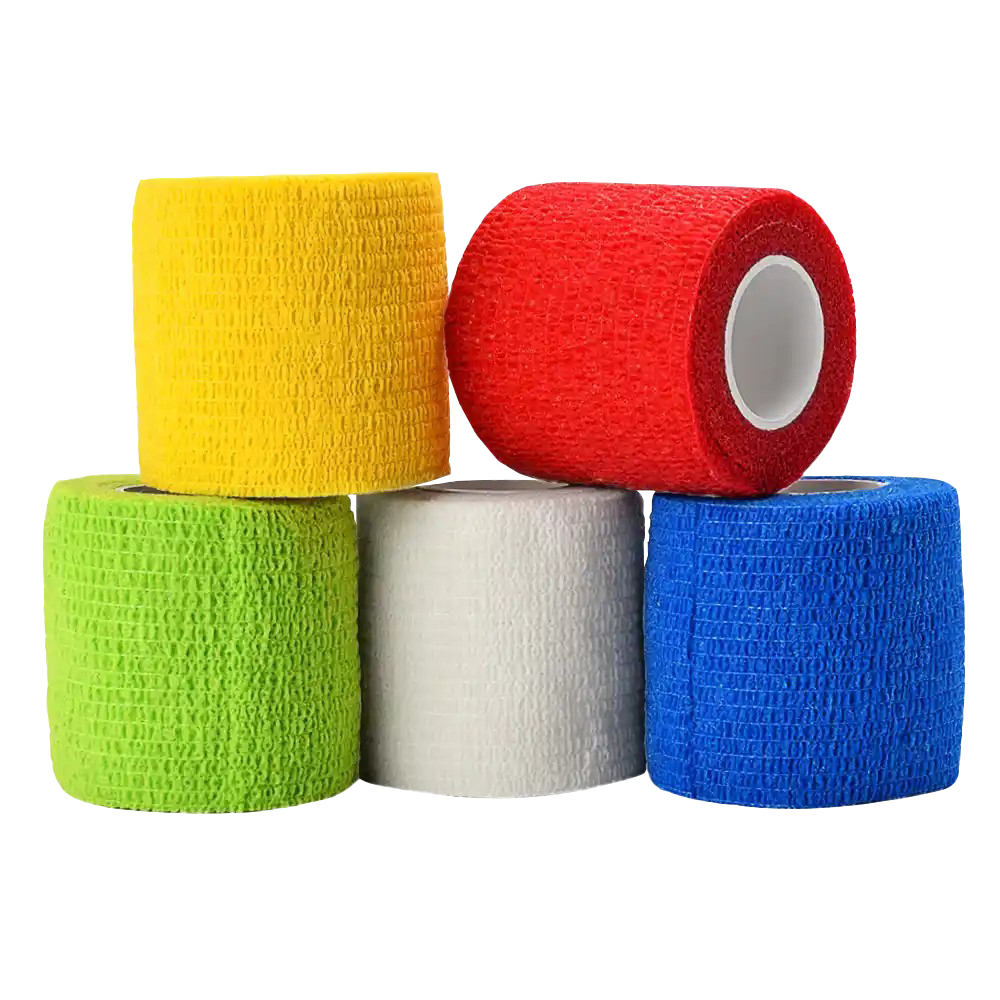Elastic bandages, also known as compression wraps, are essential medical tools that provide support, compression, and stability to injuries such as sprains, strains, and muscle tears. These stretchable bandages conform to the body’s shape, offering an effective solution for reducing swelling and aiding in recovery.
The Functionality of Elastic Bandages

The primary purpose of elastic bandages is to minimize swelling by restricting fluid accumulation, thus preventing further damage and expediting healing. They also offer crucial support to weakened or injured muscles and joints, assisting in pain management and stabilization.
Why Choose Elastic Bandages?
One of the key advantages of elastic bandages is their adjustability. Available in various sizes and widths, they are suitable for different body parts and can be wrapped in multiple ways depending on the injury and the level of compression required.
When using an elastic bandage, ensure that the injured limb or joint is in a natural position before application. Begin wrapping from the furthest point away from the core, moving towards it. Be cautious not to wrap too tightly, as this may impede blood circulation.
Pro Tip: Maintain consistent tension while wrapping to provide adequate support without causing discomfort or constriction.
Understanding Elastic Bandages
Benefits and Uses of Elastic Bandages
Elastic bandages are widely used across various applications, including:
- Sports injuries: Athletes rely on them to prevent and manage injuries such as sprains and strains.
- Post-surgery recovery: They minimize swelling and provide necessary compression to aid healing.
- Joint support: Those with chronic joint conditions use them for added stability.
- First aid: Essential in medical kits for emergency treatment.
At Medilink, we manufacture high-quality elastic bandages designed to deliver superior support and compression. Our products are crafted with premium materials to ensure durability, flexibility, and comfort, making them an excellent choice for medical professionals and everyday users alike.
How to Choose the Right Elastic Bandage
Considerations for Size and Compression Strength
When selecting an elastic bandage, take into account the following factors:
- Size: Choose the appropriate width and length to ensure proper coverage and support.
- Compression Strength: Select a bandage with adequate compression based on the severity of the injury. Higher compression is recommended for severe injuries.
Material and Closure Options
Elastic bandages are available in different materials, including:
- Cotton: Breathable and suitable for sensitive skin.
- Polyester: Offers durability and elasticity.
- Latex: Provides firm compression but may not be suitable for those with latex allergies.
Closure options include hook-and-loop fasteners, clips, buttons, and self-adhesive designs, ensuring ease of application and secure placement.
Pro Tip: Regularly wash your bandages to maintain hygiene and elasticity.
Step-by-Step Guide to Applying an Elastic Bandage
Preparing the Bandage and the Injured Area
Before applying an elastic bandage, ensure that:
- The skin is clean and dry.
- You have the correct bandage size.
- Padding is placed over open wounds if necessary.
- The bandage is applied with even pressure to prevent excessive tightness.
Wrapping Technique for Different Body Parts
Proper wrapping technique is crucial for effective compression. Here are some general guidelines:
- Secure the end of the bandage on the affected area.
- Wrap in a spiral or figure-eight pattern, ensuring each layer overlaps the previous one by half its width.
- For joints like ankles, cover both the foot and lower leg for added stability.
- Fasten the end securely without excessive tightness.
Common Mistakes to Avoid
- Wrapping too tightly: This can cut off circulation, causing discomfort and swelling.
- Using insufficient padding: This may lead to pressure sores.
- Overlapping improperly: Ensuring even coverage helps maintain support.
- Keeping the bandage on for too long: Periodic removal prevents constriction and skin irritation.
Proper Care and Maintenance of Elastic Bandages
Cleaning and Washing Instructions
To extend the lifespan of your elastic bandages:
- Hand wash using lukewarm water and mild detergent.
- Avoid harsh chemicals such as bleach or fabric softeners.
- Air dry completely before reuse to maintain elasticity.
Storage and Disposal Guidelines
- Store in a clean, dry place away from direct sunlight and moisture.
- Dispose of used bandages in a sealed bag or follow local medical waste disposal guidelines.
- Replace worn-out bandages to ensure continued effectiveness.
Why Choose Medilink Elastic Bandages?
At Medilink, we take pride in offering high-quality elastic bandages designed for superior performance. Our bandages provide optimal compression, breathability, and durability, making them a trusted choice for athletes, medical professionals, and individuals seeking reliable support. With our commitment to innovation and customer satisfaction, Medilink ensures that you receive the best in compression therapy solutions.
Invest in your health today with Medilink Elastic Bandages—your go-to solution for support, compression, and healing.
Sample application
We are a company deeply engaged in the field of orthopaedic products, if you are interested, please click the button below to contact our professional team, we can provide including but not limited to consulting services, sample supply, questions.
